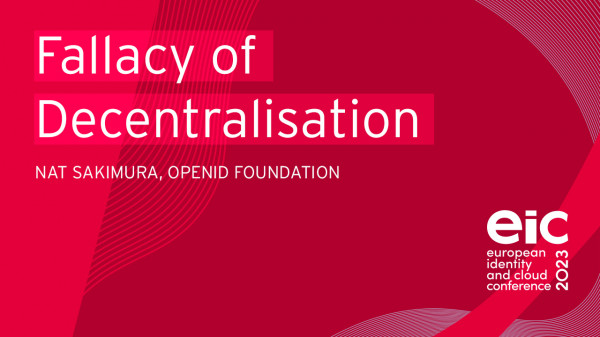Common Web3 narratives go like this: Web1 was decentralised. Web2 is centralised and dominated by GAFAM/BigTechs. Web3 will be decentralised.
Is this real?
Let us look back. Web1 was about publishing web pages that were linked to other pages. The publishing sites were decentralised all over and were connected by links. Schematics resembled spider webs. Thus, the name “web”.
Web2 was the read-write web. In other words, API Economy. Was it a centralised architecture? Definitely not. What we imagined as Web 2.0 back in 2004 was that instead of monolithic systems, each site provides a function as REST API, and new services quickly emerge by combining these APIs like LEGO. APIs were decentralised and distributed all over the internet. API calling relationships connected those sites; the schematics resembled a spider web. Thus, the name Web 2.0.
Note, in 2004, none of Google, Amazon, Facebook/Meta, or Apple resembled what we have now.
Google just acquired Double Click, but it still had the banner word “Do not do evil.” The size of the company was 1/10 of Hitachi. Amazon still was an internet merchant. Facebook was just founded, but it still was primarily confined to Harvard and other American university students. Apple was an iPod and Mac company. Were they BigTechs? No! Big guys were IBM, Hitachi, etc., and Google, Facebook etc. were carrying the liberation torch!
Then, how come we end up here, despite the fact that the architecture was completely decentralised?
It was the combination of free market competition and technology that exhibited increasing returns. Any IT technology has decreasing cost/increasing return on investment. Under the circumstances, it will end up in Cournot equilibrium in a fashionable vocabulary - in a common word; winner takes all - monopoly/oligopoly. That’s how we ended up.
What about web3 and decentralised identity? Would the decentralisation dream finally come true?
Well, they still are IT. They still exhibit increasing return necessarily. Then, how can you believe that it will not be dominated by large players just like it happened to Web 2.0? If you let the free market play, it will certainly be. Unlike in the case of Web 2.0 where there still were 100s of thousands of IdPs, we may end up with two Wallets where the wallet provider can come in and decide to delete your verified credentials or ban your account. How decentralised!
Wait, there is more.
How can you believe that code that runs on your phone adheres to what it says?
The data stored on your wallet that runs on your phone may be extracting your data and sending it to criminals. We have seen many times that the initially benign code turns malicious with an update.
According to the Devil's Dictionary of Linguistic Dark Patterns compiled at IIW 2022b, “Decentralised” means “We run our code on your machine at your own risk”. Yes, at your own risk. If it is completely “decentralised” and there is no “provider”, then there is nobody to go after from the point of view of a regulator. Having a “centralised” provider is much better from a consumer protection point of view in this respect.
Is there no light? Are we going to live in the darkness of decentralisation?
Let us briefly think about what web3 was supposed to be. Forget about something that is found between A and Z. I am not talking about that. I am talking about cypher-punks' idealistic dreams.
Many people believe that blockchain is just an immutable ledger. No, it is not! That’s not the innovation of blockchain. Chained immutable records were there long before Satoshi’s invention. It is called Hysteresis signature and was invented in 1999.
Then, what was the innovation? it was the committing of the code into the it to make it immutable and executing it by multiple machines to exclude the result from changed code. In other words, it was the establishment of trust in the running code.
The light could be diminishingly small, but it still is light. That’s the light that I see in web3 that’s not between A and Z.
